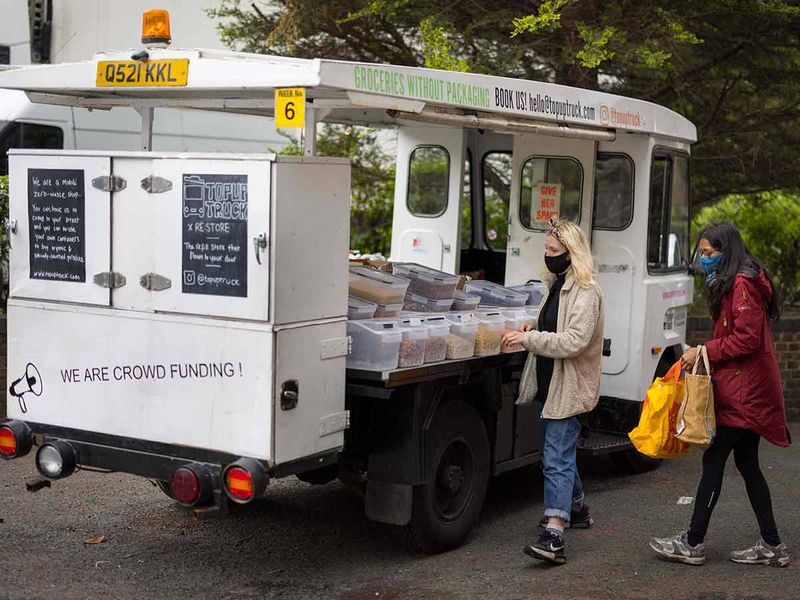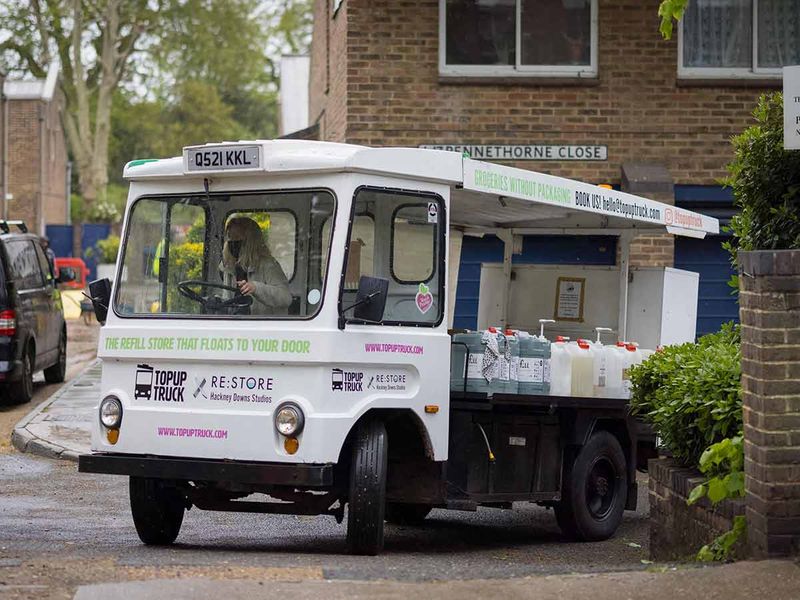Question: What’s the similarity between anti-vaxxers, flat-Earthers and climate-change deniers? Answer: They’re all part of the latest “The Science Denial” scenario of Plague Inc, a popular smartphone game.
Originally published in 2012, Plague Inc simulates a pandemic by putting the player in control of a dangerous pathogen — a virus, parasite or fungus. The game's objective is simple: find ways to help you (the player) render humans extinct. How? By evolving and spreading it to as many people as possible.
The end goal: Infect the entire world and end all human life. Then, you win.
The role of "anti-vaxxers", by the way, came as a later plug-in. That's art — a graphics-heavy game (also available for Xbox, PS4 and PC as Plague Inc: Evolved) — imitating life.
Fast forward to 2020-2021: A real pandemic burst into the global scene, leaving 167 million infected and 3.47 million dead (as of May 25, 2021), according to Worldometers data. Down here below, anti-vaxxers play with real lives. What's their role in jeopardising global efforts against the pandemic? Let's break it down:
Q: What is the net effect of the anti-vaxx camp on efforts to fight COVID?
Anti-vaxxers are at the front, back and centre of the hotly-debated, and deeply polarising global vaccine campaign. They're also in the sub-surface of social media, casting doubt over the efficacy and safety of COVID-19 shots. Spreading conspiracy theories about supposed “side effects”. Raising alarm bells that heighten hesitancy, or outright refusal of vaccines. Some on Facebook have tens of thousands of ardent followers — and advertisers. In that kind of world, who cares about science? Or the discipline of open scrutiny?
Anti-vaxxers are at the front, back and centre of the hotly-debated, and deeply polarising global vaccine campaign. They're also in the sub-surface of social media, casting doubt over the efficacy and safety of COVID-19 shots.
Q: What is vaccine hesitancy/refusal?
It refers to the delay or concerns about the decision to vaccinate oneself or one’s children despite the availability of vaccine services. Vaccine refusal is outright rejection of vaccines.
HESITANCY EXISTS IN 90% OF COUNTRIES:
Vaccine hesitancy exists in more than 90% of countries, The Lancet medical journal reports. In many areas, immunisation for measles, a vaccine-preventable disease was largely eliminated following widespread use of the measles-mumps-rubella (MMR) vaccine, has drooped to less than the 95% threshold set by WHO that was required for herd immunity.
Q: Vaccine hesitancy/refusal: What is it a problem?
Two ways to face COVID: allow it to infect the planet's 7.8b inhabitants (and live with the deadly consequences), or use science, via vaccines. Now, vaccine production is being ramped up. In some countries, there are now more vaccines than there are people willing to take them. Here’s a warning from experts: simply providing high-quality COVID-19 immunisation services will likely not achieve the necessary vaccination rate.
“The pandemic will soon enter a new phase when the pandemic wanes, cases drop, vaccine supply expands, restrictions ease and vaccine hesitancy rates spike,” warned Dr. Heidi Larson of the Vaccine Confidence Project.
Q Is opposition to vaccines — hesitancy/rejection — new?
No. It's as old as time. Refusing vaccines go as far back as the early 1800s — when the smallpox vaccine started being used in large numbers.
Sanitary, religious and political objections were raised against Dr. Edward Jenner’s (father of vaccines) idea of injecting someone with a cowpox blister to protect them from smallpox. Some clergy believed that the vaccine went against their creed. In the 1970s, the DPT (diphtheria, pertussis and tetanus) vaccines drew a wave of opposition when it was linked to brain damage (later studies found no association/causation).
Q: What are the degrees of vaccine hesitancy/refusal?
They vary. In general, people who reject the standard vaccine schedule fall into 2 groups.
- Group 1: “Vaccine hesitant” — they may delay or space out vaccines or accept specific vaccines only.
- Group 2: “Vaccine refusal” — these are people and parents who accept NO vaccines for themselves or their children.
If you look at those people (anti-vaxx camp), they break them down into different groups. There are the true anti-vaxxers — the people that, through no science at all, have made up their minds that vaccines are bad. What they believe in is nonsense.
Dr Drew Weissman, father of mRNA vaccine, professor of Medicine at the Perelman School of Medicine, University of Pennsylvania
Q: Can vaccinations be mandated: What countries have adopted it?
Mandatory vaccination has become more popular across Europe. Australia has offered financial incentives to families who fully vaccinate their children.
The US, on the other hand, give people the right to decline vaccines (under current protocol, the only exception is when child is exposed to tetanus infection).
If you look at those people (anti-vaxx camp), they break them down into different groups. There are the true anti-vaxxers — the people that, through no science at all, have made up their minds that vaccines are bad. What they believe in is nonsense.
Dr Drew Weissman, father of mRNA vaccine, professor of Medicine at the Perelman School of Medicine, University of Pennsylvania
In China, where officials seek to vaccinate 560 million people with COVID shots by June, health authorities urged local executives to halt mandatory vaccination orders. Instead, authorities only encourage those in need to get vaccinated — “while respecting their wishes” — according to a Global Times report.
Q: Is it true that vaccines cause autism?
No, it’s not true. The claim that they do came from a bogus, widely discredited study. In 1998, the medical journal Lancet published results of research which concluded that the MMR (measles, mumps and rubella) vaccine led to autism in children. The study looked into the cases of just 12 children. Later, British journalist Brian Deer exposed the study as bogus.
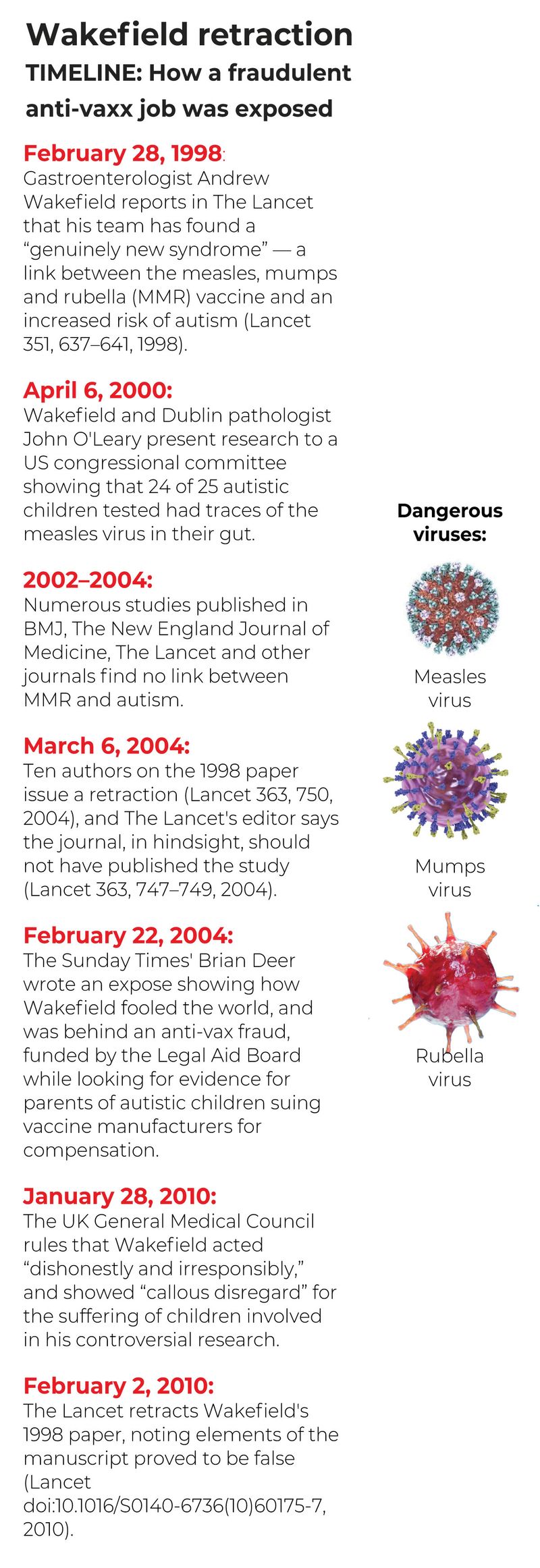 Image Credit: Seyyed dela Llata / Jay Hilotin
Image Credit: Seyyed dela Llata / Jay Hilotin
His investigative reports, between 2004 and 2010, revealed how data cited in the study was “manufactured” at a London medical school, for which the lead researcher, Andrew Wakefield, collected money from a law firm for two years prior to its publication. Wakefield failed to disclose the payments to his co-authors and the Lancet review committee as part of standard disclosure protocols.
DIPTHERIA EPIDEMIC
In Russia, major epidemics of diphtheria broke out (in the former Soviet Union) in the 1990s. The main culprits: low primary immunisation rates for children and the lack of booster vaccinations for adults. The result: an increase from 839 cases in 1989 to nearly 50,000 cases and 1,700 deaths in 1994, based on CDC data.
The study was used to bolster a class-action suit against MMR vaccine makers that cost $100 million for both sides. Though the study and authors were discredited, the scare lingers around the world to this day.
Wakefield’s assertions have since been tested extensively, with a 2019 study involving 600,000 children — which found no links between MMR shots and autism. When the fraud was unearthed, Wakefield lost his license to practise medicine in the UK. He later moved to the US where he has continued his anti-vaxx campaign, and enjoys a hero-status among his adherents. But the damage has been done. Wakefield’s infamous paper continues to affect vaccination rates and the perception of vaccine safety worldwide.
VACCINE HESITANCY: PAKISTAN
A key challenge in Pakistan (population: 217 million as of 2019), say health officials, is not vaccine availability but to convince millions to vaccinate. “Our problem is hesitancy and we are not alone in this,” said Dr. Faisal Sultan, the adviser to the prime minister on health affairs. As of May 11, only 5 million people have so far registered, while the government said almost 11 million vaccines were available. Officials said at least 40% — or 2 in 5 — Pakistanis are not ready to get the COVID-19 vaccine. This places the country in the list of least-eager nations to get vaccinated, according to Ipsos survey conducted in March 2021.
8
Number of COVID-19 vaccines approved so far
Q: How many COVID-19 vaccines are approved?
There are current 8 vaccines approved in different jurisdictions. Besides the 8 approved, researchers are currently testing 91 others vaccines in clinical trials (on humans), and 27 have reached the final stages of testing. At least 77 pre-clinical vaccines are under active investigation in animals.
VACCINE HESITANCY: INDIA
A widely-circulated rumour that vaccines caused infertility blew a hole to the COVID vaccination system that the government set up. India faced an unexpectedly high vaccine hesitancy rates, frustrating the sub-continent’s massive immunisation challenge for its 1.3 billion people. Dr. Vinod Paul, Head of India’s COVID-19 task force and National Institution for Transforming India Aayog member said some people were concerned with the efficacy and possible unwanted side effects of the vaccine, he was quoted in an ADB report. To counter this skepticism, India asked health worker associations to issue statements in favour of vaccination. India also capitalised on using mass media to broadcast people getting vaccinated. Influential people were also tapped to appeal to the public to get vaccinated. Dr. Paul said that when the vaccine priority list moved to people over 60 years of age, after inoculating frontline health workers, India focused on getting across two key vaccine messages: 1) vaccines provide protection against COVID-19; and 2) vaccines are safe.
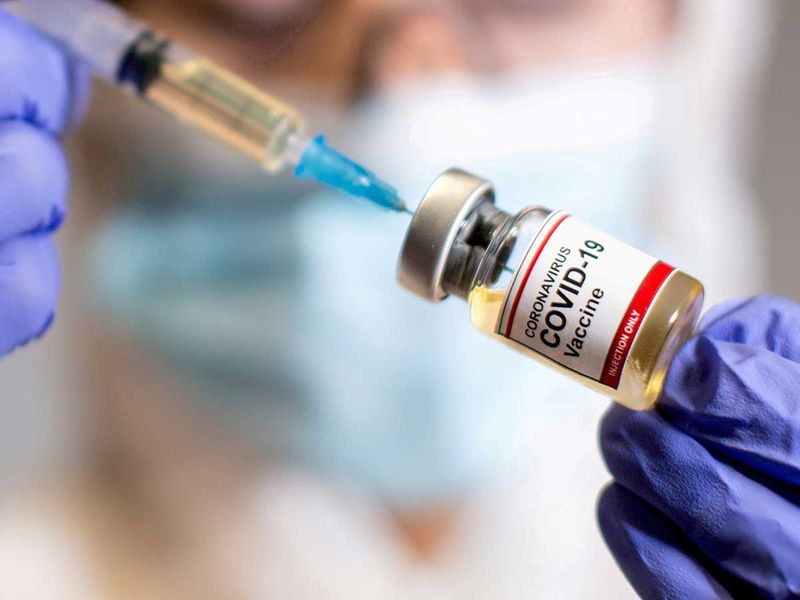 Vaccine disinformation, fear-mongering and misconceptions on social media is the scourge of asymmetric, modern communications. Coupled with confirmation bias (seeking only the information one believes in) and algorithmic promotion, it’s the noisiest bunch that’s often heard loud and clear. Image Credit: Reuters
Vaccine disinformation, fear-mongering and misconceptions on social media is the scourge of asymmetric, modern communications. Coupled with confirmation bias (seeking only the information one believes in) and algorithmic promotion, it’s the noisiest bunch that’s often heard loud and clear. Image Credit: Reuters
Vaccine disinformation, fear-mongering and misconceptions on social media is the scourge of asymmetric, modern communications. Coupled with confirmation bias (seeking only the information one believes in) and algorithmic promotion, it’s the noisiest bunch that’s often heard loud and clear.
Q: What’s been the effect of vaccine hesitancy/refusal in the past?
Vaccine refusal has been associated with outbreaks of invasive Haemophilia influenzae Type B disease, varicella, pneumococcal disease, measles, and pertussis, resulting in the unnecessary suffering of young children and waste of limited public health resources, according to Daniel Salmon, who wrote for the American Journal of Preventive Medicine in a 2015 article.
VACCINE HESITANCY: PHILIPPINES
The Philippines’ dengue vaccination programme, which began in 2016, was suspended following the manufacturer’s release of new findings that the vaccine increases the risk of severe dengue. The result: mistrust in vaccination programs, and a steady decline in childhood immunisations. Today, vaccine hesitancy — or refusal — runs high in the south-east Asian country. A March 2021 survey shows that only 16% of respondents wanted to be vaccinated. Up to 61% would say “No” to getting inoculated with a COVID-19 vaccine if the shot was available during the polling period (from February 22 to March 3, 2021). Philippine health officials are working overtime to address misconceptions about vaccination through intensive information drives, alongside trainings on cold chain management, COVID-19 testing.
Q: Will the anti-vaxx campaign ruin the global drive against COVID-19?
Yes, they could potentially ruin it for everybody. Given the rapid pace of COVID-19 infection across the world, which props up the emergence of new variants, there's an urgency for the global community to get ahead of the virus.
In the past, campaigns by the anti-vaxx camp has led to reduced vaccination rates — which in turn has been linked to a recurrence of vaccine-preventable diseases such as measles and mumps.
Unlike SARS-CoV-2, which has rapidly mutated into new strains in its first year as it jumped from human-to-human, measles virus does not mutate the same way. When a person is fully vaccinated against the measles virus, he will usually be protected for life, explained Mayo Clinic scientists. A study published in Cell Reports Medicine shows a "near-zero probability" for the natural emergence of a new measles virus capable of evading vaccine-induced immunity.
With the coronavirus, however, the more infections (due to vaccine rejection/hesitancy), the greater the chance to generate a large set of mutations — simultaneously — possibly making some available vaccines less effective.
ARE VACCINES SAFE? THE POLIO STORY
There was a time, when thousands of people young and old were afflicted by polio, including the late US President Franklin D. Roosevelt. You don’t hear much about children maimed by the bone-wasting virus today, thanks to polio vaccines, first invented in 1955.
Q: Who are the figures behind the anti-vaxx camp?
The anti-vaxx camp is a fringe community of people trashing vaccines as a whole. In modern times, the intellectual father of the anti-vaxx camp is British ex- doctor Andrew Wakefield. In 1998, the former gastroenterologist wrote results of his team’s research in The Lancet that they found a “genuinely new syndrome” — a link between the measles, mumps and rubella (MMR) vaccine and an increased risk of autism. It was a dynamite study.
 Image Credit: Seyyed dela Llata / Gulf News
Image Credit: Seyyed dela Llata / Gulf News
For 12 years, his thesis stood uncontested. In February 2010, The Lancet retracted Wakefield's 1998 paper, noting elements of the manuscript proved to be false. An expose showed Wakefield failed to disclose that, two years before his study was published, he had received payment from a law firm out to pin down MMR vaccine makers with a class-action suit.
He failed to disclose this. More importantly, Wakefield based his conclusions on 12 children whose medical data were cooked up. In January 2010, the UK General Medical Council ruled that Wakefield acted “dishonestly and irresponsibly,” and showed “callous disregard” for the suffering of children involved in his controversial research.
After he was discredited in the UK, Wakefield migrated to the US, where he continued his campaign. Some people hail him as a hero for saying truth to power, and standing up to "Big Pharma”.
Q: Other prominent anti-vaxxers?
The intellectual head of the anti-vaxx camp is US lawyer Robert F. Kennedy Jr, nephew of former US president John F. Kennedy. In 2017, he announced he would be heading up a new federal panel on vaccine safety convened by Donald Trump. That didn’t happen. On February 11, 2021, Kennedy was kicked out of Instagram for vaccine misinformation.
Another is Dr. Steven Hotze, a US medical doctor who has created a widely-circulated video urging viewers to “just say no” to the new coronavirus shots, especially the mRNA one. The American Council on Science and Health (ACSH) dismissed his claim — as “almost all of it completely wrong”. Dr Hotze was recently slapped with a warning by US drug regulators following claims about the vitamins his company is peddling — supposedly to curb COVID-19 — without conducting the necessary clinical studies to clear regulatory hurdles.
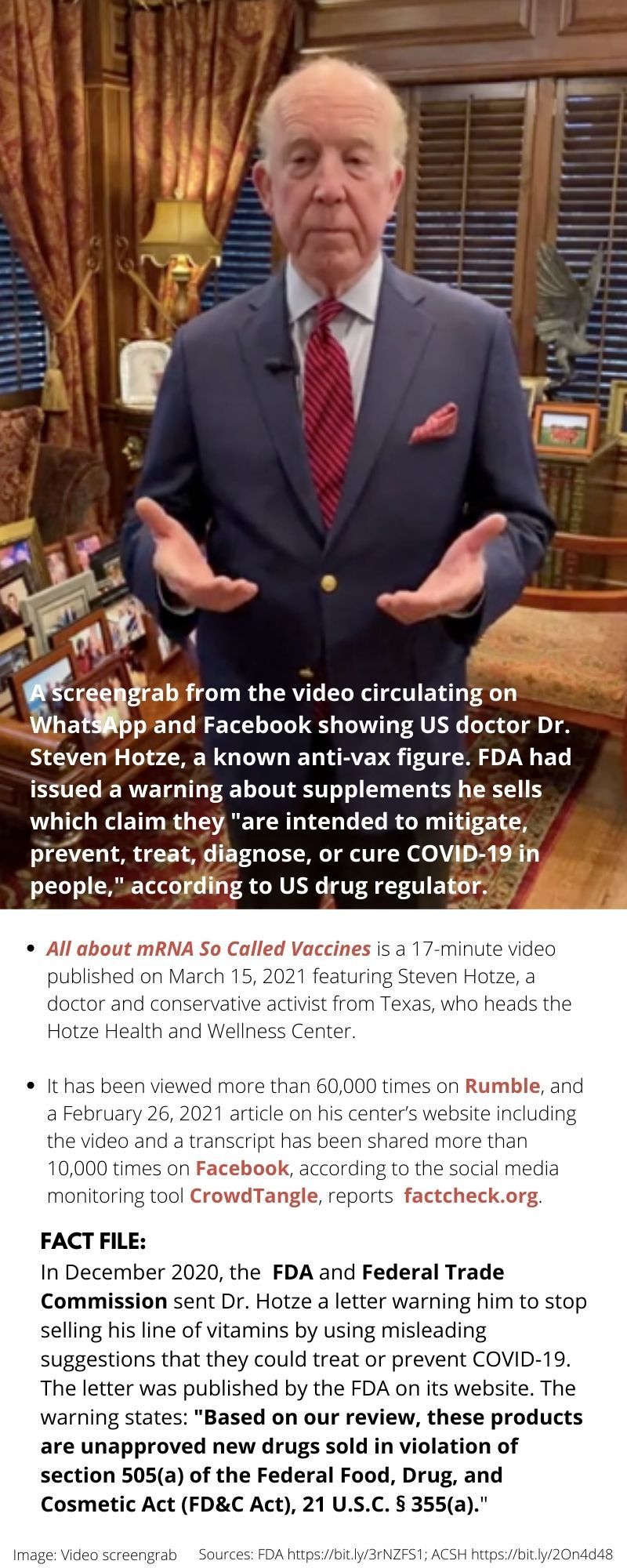 Image Credit: Seyyed dela Llata / Gulf News
Image Credit: Seyyed dela Llata / Gulf News
Q: Why did Instagram ban Robert F Kennedy Jr?
Kennedy, who enjoys a huge following on social media, frequently posts debunked or unproven claims about vaccines. The ban came after he repeatedly posted misinformation about vaccine safety and COVID-19. He also uses his social media pages to post about large pharmaceutical firms and environmental health concerns. Kennedy Jr. repeated warns people not to take a COVID-19 vaccine “under any circumstances” — and that vaccines comprise a “crime against humanity”.
Here’s another Kennedy claim: mRNA directly “alters the genetic material of those who receive it”. He says it is no different to genetically-modified (GMO) organisms or food crops, engineered to make them resistant to bugs or drought.
“This intervention can be compared to genetically modified foods, which are also very controversial,” Kennedy was quoted as saying. Kennedy, a lawyer, claims the “mRNA genetic damage” is “irreversible and irreparable.” Kennedy compares the “genetic damage” to the type that causes Down syndrome or cystic fibrosis.
He claims that unlike older vaccines (using inactivated/attenuated platforms), many of which can be “detoxified” following injection, mRNA COVID-19 jabs “live on in perpetuity inside the body”. “The damage they cause is forever”. “You will have to live with the consequences because you will no longer be able to be cured simply by removing toxins from the human body.”
Q: Are the anti-vaxx camp solid?
No. Their attitudes and persuasions vary widely — from mere hesitancy sparked by a wait-and-see posture (“let others have it first, then I’ll take it if they live”), to institutional distrust and general unease, to full-blown conspiracy theories point to fantastic tales of tiny microchip embeds, forced sterilisation, and even mass-murder.
 Lynn Channel is a prolific anti-vax channel on Faceboook, which ropes in hundreds of thousands of views in a few days. Image Credit: Screengrab / Facebook
Lynn Channel is a prolific anti-vax channel on Faceboook, which ropes in hundreds of thousands of views in a few days. Image Credit: Screengrab / Facebook
Q: How do anti-vaxx camp spread their message?
It’s mostly on social media (Facebook, WhatsApp) and blogs — and, now, TikTok. Some unvaccinated users claim they will “inherit” the Earth, the soon-to-become lone survivors of a “mass extinction” sparked by COVID-19 vaccines.
Some unvaccinated users claim they will “inherit” the Earth, the soon-to-become lone survivors of a “mass extinction” sparked by COVID-19 vaccines.
Q: How to beat the anti-vaxxers and win the war against COVID-19?
It's a big job. The most powerful weapon: the truth. Open science, backed by verifiable evidence, provides the best answers. However, it must be readily accessible. A good response starts with a clear message. Answers should be ready and customised to various audiences — ranging from the easy-to-convince to the poorly reached, unconcerned and hesitant.
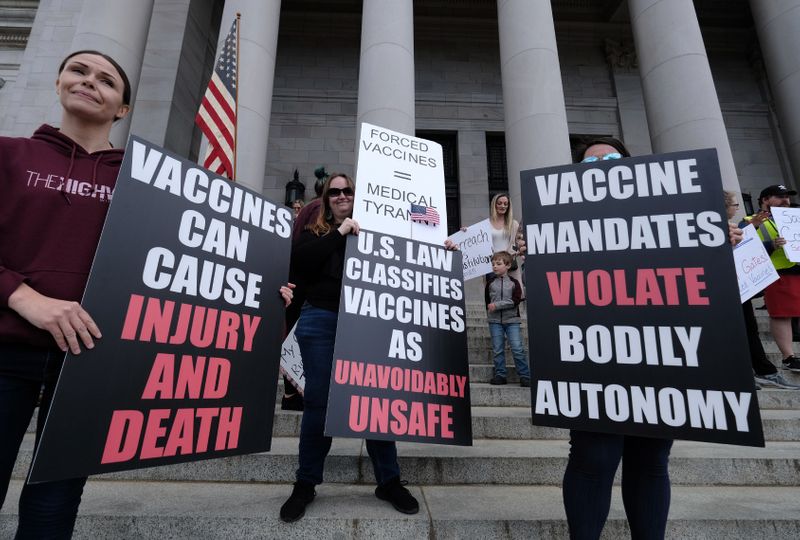 GROWING OPPOSITION TO VACCINES? The World Health Organisation (WHO) defines vaccine hesitancy as a “delay in acceptance or refusal of vaccines despite availability of vaccination services. Based on studies of social networks, it emerges that opposition to vaccines is small but far-reaching — and growing. Photo shows anti-vaccine activists joining hundreds of protesters at the Capitol in Olympia, Washington, on April 19, 2020 to protest the state's stay-at-home order. Image Credit: AP
GROWING OPPOSITION TO VACCINES? The World Health Organisation (WHO) defines vaccine hesitancy as a “delay in acceptance or refusal of vaccines despite availability of vaccination services. Based on studies of social networks, it emerges that opposition to vaccines is small but far-reaching — and growing. Photo shows anti-vaccine activists joining hundreds of protesters at the Capitol in Olympia, Washington, on April 19, 2020 to protest the state's stay-at-home order. Image Credit: AP
Creative messaging
One way is to enlist top influencers in boosting vaccine acceptance and uptake. Community engagement is another. It must be tailored to specific groups to move the wider community to seek immunisations. Also important: Understand local audience needs, attitudes, perceptions, and beliefs. Experts say part of good messaging entails keen awareness of the questions people have. They point to the most common factors that strongly influence vaccine acceptance and uptake:
Contextual
- Understand and address the historical experience (good or bad) with previous vaccine introductions.
- Know the religious, cultural, gender, or socio-economic norms.
Structural
- Understand geographic challenges: Distance to, travel conditions to reach, and general access to vaccination services.
- Know the quality of care given to people, which may be affected by health staff motivation, performance, and attitudes.
- Master the logistics/delivery systems (lack of resources or strong logistic systems to prevent stock outs, missed opportunities to promote vaccine uptake). This is a big challenge.
- Information: Know the false contraindications (particularly for sick children, older children, under-weight).
- Offer vaccine at every opportunity, another logistical challenge.
- Ensure reliability of service provision (e.g., healthcare provider should be present, vaccine is available at time of request).
Attitudes/Knowledge/Norms
- Build up knowledge about the vaccine (what illnesses it prevents, where it is available, how it works)
- Be ready to address certain beliefs that the risks posed by vaccine ("side effects") are greater than the benefit
- Be ready to address rumours/misinformation.
- Address perceived risk of the vaccine-preventable disease.
- Give the right information about efficacy of the vaccine
from World,Europe,Asia,India,Pakistan,Philipines,Oceania,Americas,Africa Feed https://ift.tt/3yD4pOY







